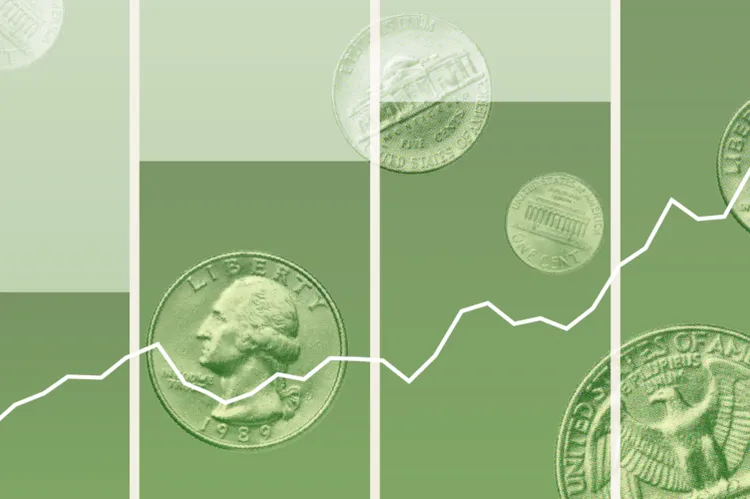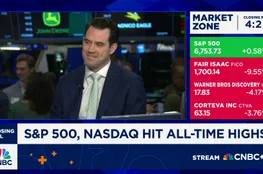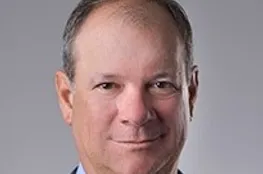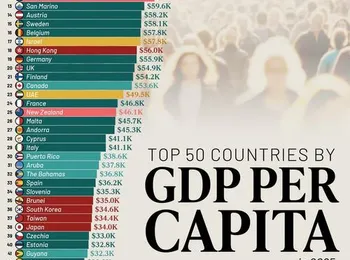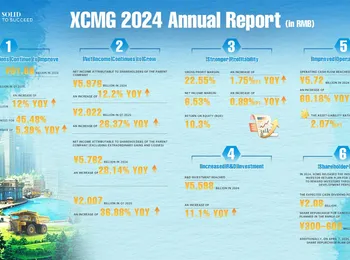There’s a lot going on in the economy today. News outlets are constantly talking about subjects like interest rate cuts, the disruptive potential of artificial intelligence technologies, and tariff proposals. It feels like the economy has gone through three cycles in the past six years. The future looks very messy and uncertain, yet there’s no shortage of pundits that claim to know what will happen tomorrow. But predicting the short-term direction of the economy has always been that way.
The path forward has never been crystal clear, and the biggest disruptions usually catch us by surprise. On the surface, that makes it difficult to sort out the direction of the market. It also distracts from the big underlying forces that fuel long-term investment success. Revisionist History The financial media often talks about short-term economic data. Month-to-month changes in unemployment rates, payrolls, interest rates, or speculation about how those will change are all too common. Then there’s plenty of other one-off circumstances that make headlines, such as the recent tariff proposals. To a certain extent, interest in these subjects is understandable because it helps gauge the health and trajectory of the overall economy. Some of it can have meaningful effects on day-to-day life. For example, changes to interest rates directly affect the cost of loans for large purchases like cars and houses.
Digesting all of that information is difficult, and the underlying data has a major shortcoming: It often gets revised. The Bureau of Economic Analysis often adjusts its estimates of gross domestic product, consumer spending, exports, imports, and others as more information becomes available in the weeks, months, or years after it releases initial numbers. On June 26, 2025, it issued its third revision to first-quarter GDP and reduced it by 0.3 percentage points from its second revision. That may not sound like a lot, but GDP typically grows by about 3 percentage points per year after accounting for inflation. So, it was a meaningful revision. The same goes for the official start and end of recessionary periods, which are partially driven by changes in GDP. The National Bureau of Economic Research typically adjusts a recession’s start date after the fact. In hindsight, we often don’t know a recession is occurring until it’s already well underway.
The media and investors alike are subject to recency bias: the tendency to place more emphasis on recent news and events than on older circumstances. There has been no shortage of economic disruptions over the past six years. Since mid-2019, the global economy has endured a pandemic, multiple supply chain disruptions, a short bout of inflation, and geopolitical tensions. Through all of that, real US GDP grew at about 2.3 percentage points annualized between July 2019 and March 2025. Likewise, the long-term history of the US economy is full of land mines. It endured multiple recessions, a depression, world wars, years of extreme inflation, fear of nuclear annihilation, and extended periods of high unemployment. But it always bounced back. Optimism It’s easy to get hung up on past problems and miss what’s important. Some of those setbacks lasted longer than others, but they all proved temporary. The economy worked through them and continued to grow and thrive. It has proved incredibly resilient not just over the past six years, but over the past century. That’s a big reason to be optimistic about the future. The US economy’s current situation has never looked better. Economic output, as measured by real GDP, currently sits near an all-time high. Real GDP broke $23 trillion in early 2024, and it is on pace to surpass $24 trillion in the next year. Inflation has cooled down to about 3% over the past 2.5 years, which is slightly lower than the long-run 3.5% average the US has experienced in the post-World War II era since January 1948. Employment figures also look great by historical standards. The unemployment rate has hovered around 4% over the 12 months through June 2025, or below the long-term average of 5.7% dating back to January 1948. Further, the US economy has continued to employ more and more people as it has grown. It employed nearly 160 million Americans (excluding volunteers, farmers, and those self-employed) at the end of June 2025—an all-time high. Total Employees
The Long Game The incredible upward trajectory of the US economy has big implications for investors. Collectively, publicly traded corporations develop new technologies that enable future growth in their own industries and others. Those technologies produce goods and services in more cost-effective ways, and they generate profits. Corporations reward their shareholders by returning those profits through dividends, buybacks, or reinvesiting in their business to build a more valuable share of stock. That basic system has persisted for decades. Long-term stock market data compiled by Nobel laureate economist Robert Shiller supports the resiliency of the US economy. Real US GDP grew at an annualized rate of 3.1 percentage points from 1948 through 2024. Over that same period, real corporate earnings grew at 3 percentage points annualized, and real dividends at 2.5 percentage points. In other words, GDP, corporate profits, and dividends all grew at roughly the same annualized rate. That makes sense because corporate profits and dividends account for a decent portion of US GDP. They may grow at different rates over short periods, but they should grow at approximately the same rate as the overall economy over the long run. There are two major lessons that investors can glean from that data. First, publicly traded corporations perform most of the heavy lifting. Investors benefit by getting exposure to the market and reducing, if not eliminating, anything that drags on performance. That isn’t difficult to do these days. Broad-market exchange-traded funds, such as those listed below, hold shares in nearly every publicly traded corporation, and their fees are so low that they round to zero. The second lesson is remaining steadfast when the inevitable drawdowns occur. Charlie Munger, Warren Buffett’s late business partner, summarized it best: “I think it’s in the nature of long-term shareholding with the normal vicissitudes in worldly outcomes and in markets that the long-term holder has his quoted value of his stock go down by say 50%. In fact, you can argue that if you’re not willing to react with equanimity to a market price decline of 50% two or three times a century, you’re not fit to be a common shareholder and you deserve the mediocre result you are going to get…” Munger spoke a harsh truth, but it’s one that all successful investors eventually make peace with. Shareholders are compensated for bearing risk. Some of those risks come from individual companies or market segments, while others are consequences of the economic cycle. Despite the day-to-day and month-to-month noise, the economy continues to chug along year after year, and the market tends to follow. Historically, GDP has taken a significant hit only during severe downturns. Corporate profits usually take a bigger hit, but both eventually recover and continue their persistent upward drive, as shown below. Real Growth of US GDP and Corporate Profits All investments center around beliefs about what will transpire in the future. No one really knows what will happen tomorrow, next month, or next year. The most catastrophic disruptions are those that we never saw coming. All those events tend to wash out over multiple decades. The secret to long-term investment success comes down to tapping into that long-term economic growth in the most cost-effective way possible. It also requires staying put when the inevitable downturns unfold. This article appeared in the July 2025 issue of Morningstar ETFInves tor. Download a free sample issue here .

